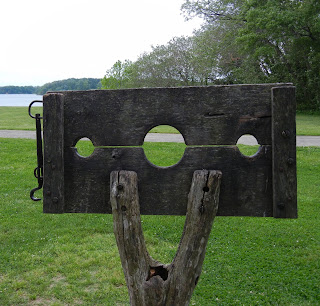It is 2018!
Let’s celebrate collecting this year! And, let’s be thankful
too! We are lucky to have this hobby.
My resolutions:
*Know that all collecting is cool. We share the same kink in
the brain, an extra bundle of neurons that keeps us in hunt mode. Put another
way, we muse about coins, tokens, and all that is small and round.
I will chase after
relics, talismans, ships, and Jamestown pieces. But also, I will be kind to
those who love the new and shiny – not everyone is a necromancer!
*Know that all collecting is a creative act. We are erecting
skyscrapers. Put another way, we enjoy assembling sets that have our
fingerprints all over them.
Quite simply, I will
love the unloved.
 |
| A site celebrating New Beginnings. Jamestown: 1608 Church, Barracks, South Palisade. And of course, Captain John Smith surveying the James. |
*Know that all collecting is about meaning. We cope with a
sometimes violent and unpredictable world by appreciating beauty and learning
about the past. Put another way, we relish art and knowledge.
I will finish my book:
Bent, Holed, & Folded: Coin Talismans for protection against misfortune and
witchcraft in Colonial Jamestown. Then, I will start on something new: Old
Sails, Talismans, … who knows?
*Know that all collecting is about sharing. Although we are
master solitaire players, we dilate when others ask. Put another way, we enjoy
the company of our collecting brethren.
This is a tough one
for me, as I am such an introvert. Still, I will give at least one presentation
this year; and I will attend more local coin club meetings. And of course, I
will continue this blog.
I have put up a New Page from the BHF book: It is the
Chapter on the Kings Touch Pieces that I profiled in a series of blog posts at
the beginning of 2017. Check it out!
The book is done but for one last edit and the addition of illustrations. It
was 2.5 years of research and writing – whew! Yes, in some ways, I hate for it
to be done.




